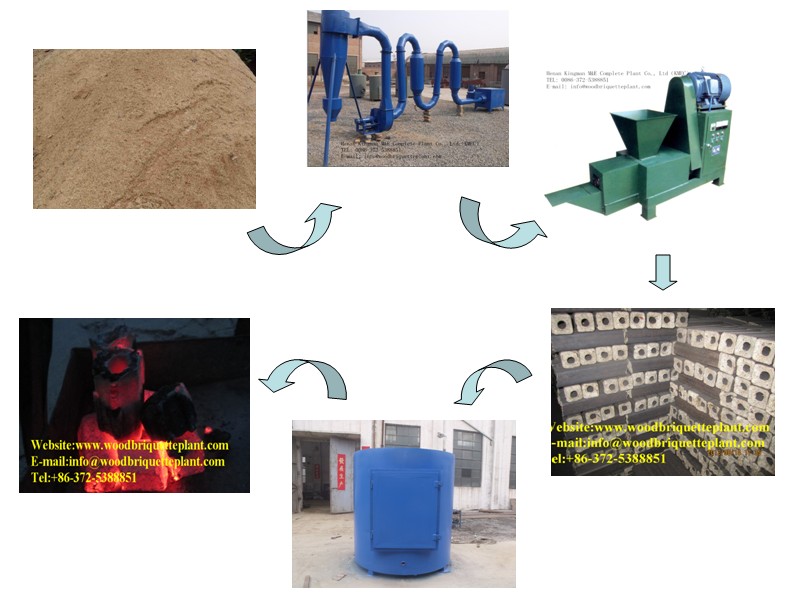Technological Process of Turning Biomass Waste into Biomass Charcoal
Technological Process of Turning Biomass Waste into Biomass Charcoal
The entire process is closely related to heating. Therefore, the thermal value can be detected more accurately with temperature detectors. The sections as follows will elaborately demonstrate temp inspection separately yet also systematically.
1. Drying Section of Biomass Waste
To acquire best-quality briquette charcoal, you should in the first place produce good-quality biomass briquettes, the solid foundation of which shall be laid with appropriate moisture content of raw material apart from equipment and technological process per se respectively. The commonly used proper value of moisture is kept around 10%-15%. In this respect, our first task accordingly should be done with drying of material. Excessively moist or even dampened material may as well be fielded in the open air to get the surface moisture vaporized so that drying time and consumption of fuel can both be reduced. After that, material can be conveyed into drying fueled by a burner, with the drying temp remaining roughly 140-300 degrees Celsius to dry material with quite high water content at a time. The drying degree of material can be varied based upon design of pipeline length and air volume, yet with the adjustment by not more than 55-70 degrees Celsius. Actually, if raw material moisture content is initially kept around 50%, of course the material can be dried at a time with drying temperature remaining roughly 80-100 degrees Celsius.
2. Briquetting Section
Biomass waste material will be squeezed forming briquettes in
briquette presses. Nonetheless, heating coil besides mold assembly namely the propeller and sleeve is another pivotal component driving temperature of the mold assembly up to 350 degrees Celsius or so. To process briquettes with fissure-free glossy surface and high density, we shall coordinate material species with specific moisture content and compatible temp. Correspondingly, temp should be adjusted and further verified according to on-site test. As per the past outcomes, we have the consistent assumption of certain propeller compression ratio and moisture content of 10%-15%, on the basis of which temperature put into use varying also in light of material size and specific model of the heating coil usually spans the range of 140-500 degrees Celsius.
3. Carbonization (Charring Section)
The carbonizing process hereby discussed is about medium and low temp carbonization. Ignite aligned briquettes within
charcoal machine (namely the carbonizing furnace) till furnace temp hits up to 160 degrees Celsius under which moisture content of biomass briquettes will be vaporized due to the heat externally attained and the one produced by the self-combustion. But the chemical contents of biomass briquettes are still constantly remained.
 Note:
Note: the process of carbonization includes 7 steps as follows:
Ignition---heating/dewatering/drying---high-temp decomposition/combustion of inflammable gas on briquette surface/strengthened decomposition/wood tar production/charcoal
Under the guidance of our engineer on site, you will get to know how to collect wood tar exactly and how to acquire the charcoal with supremely high thermal value and how to save labor costs yet still with high efficiency. Also you are welcome to contact us directly for more details.
